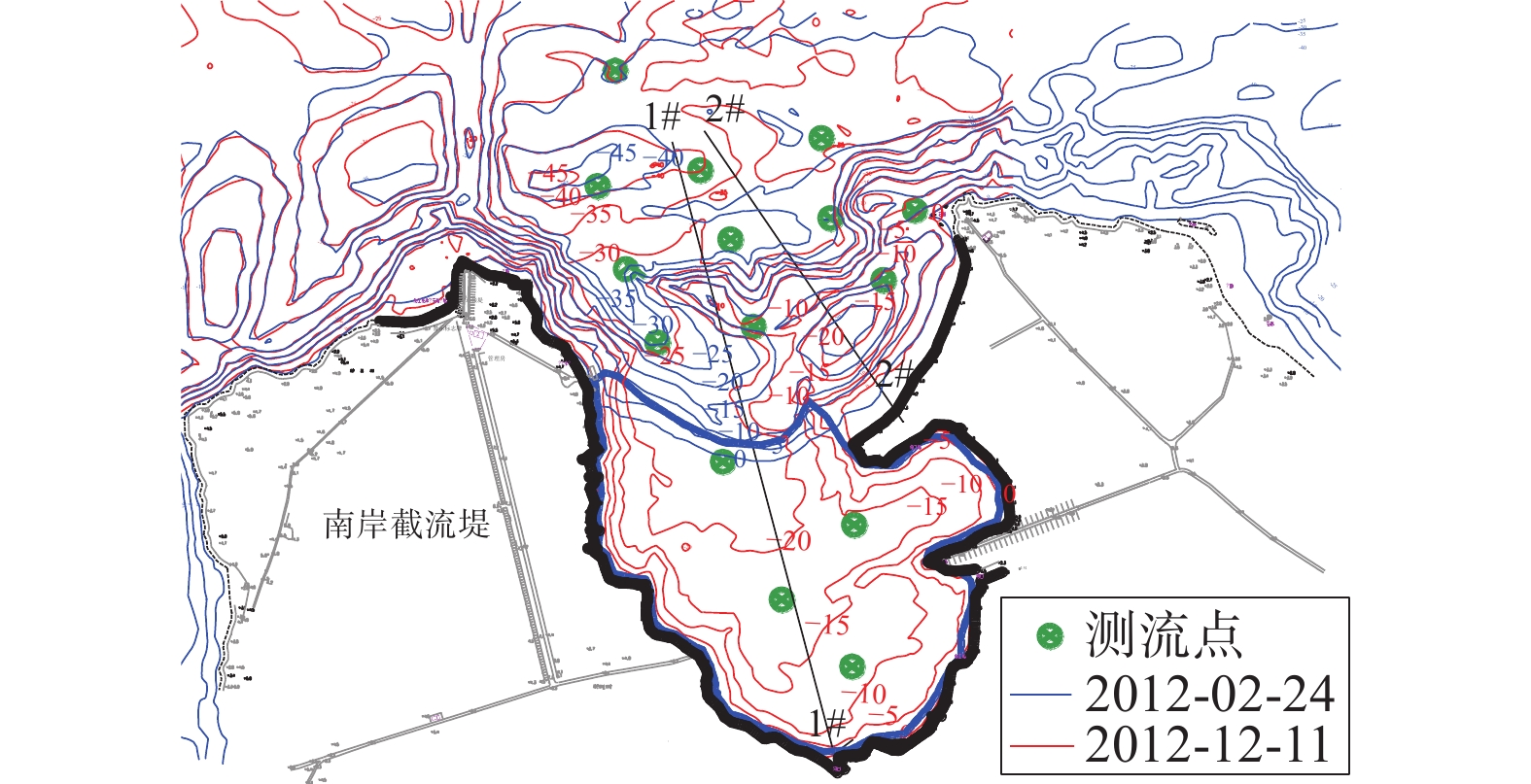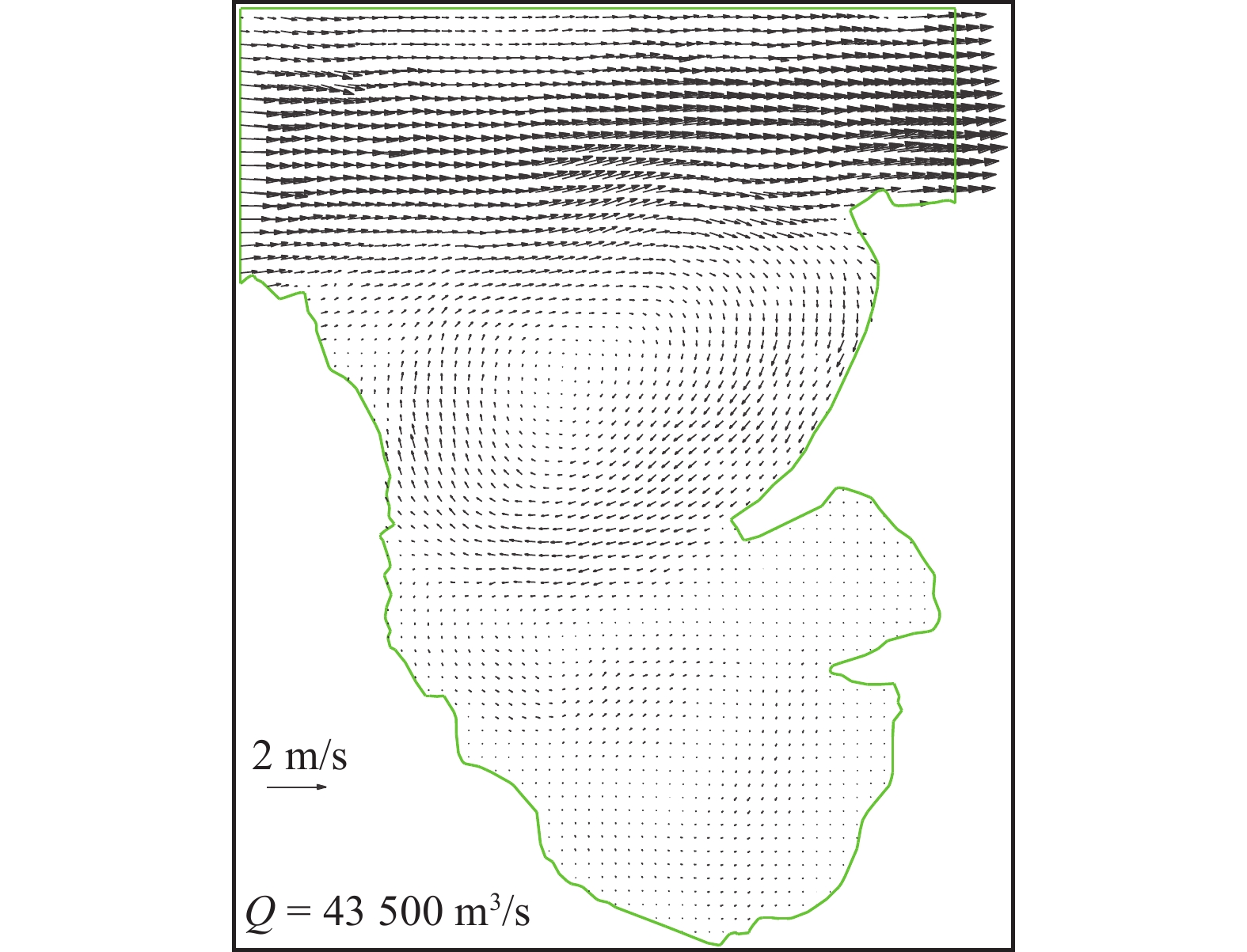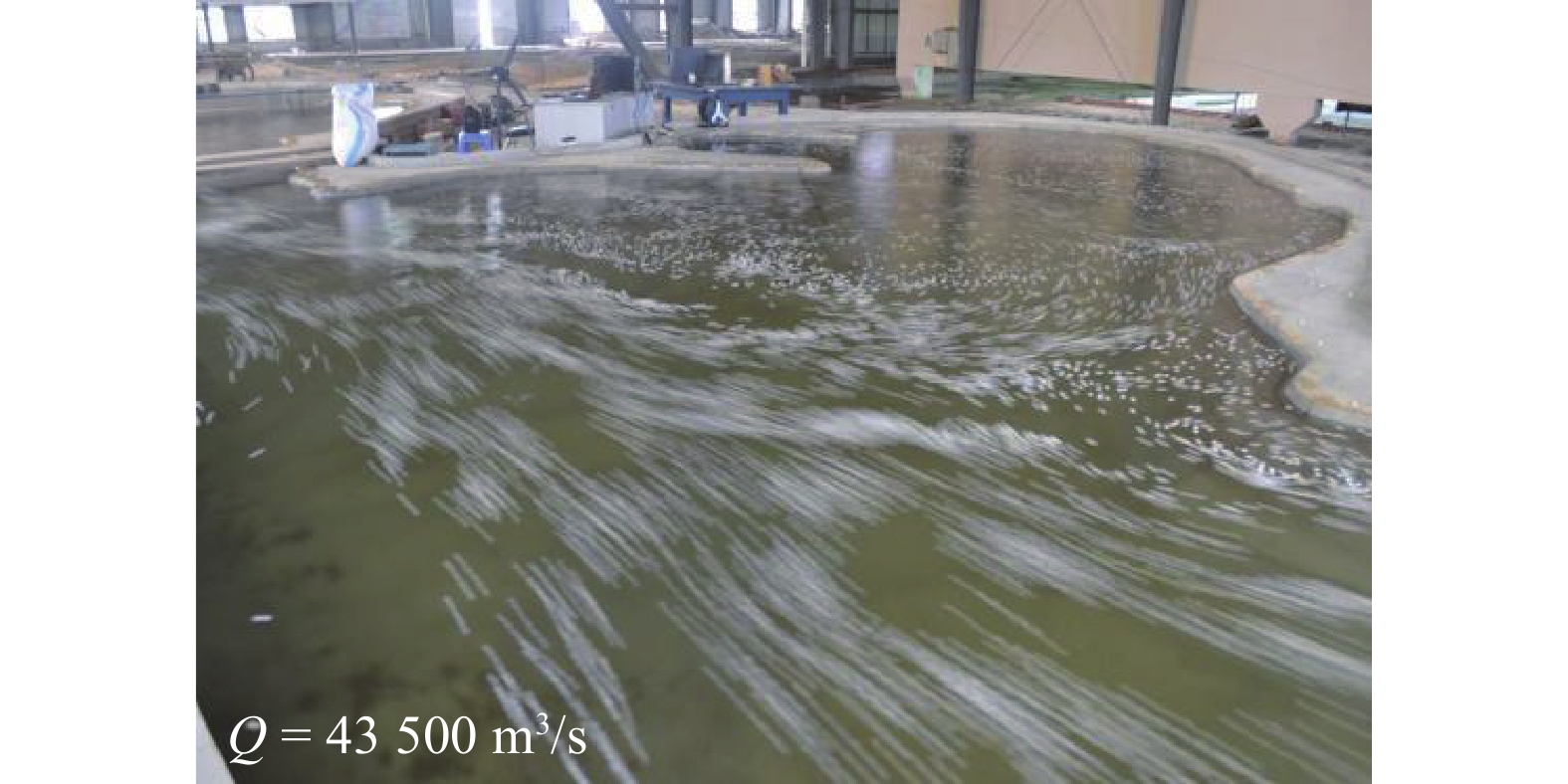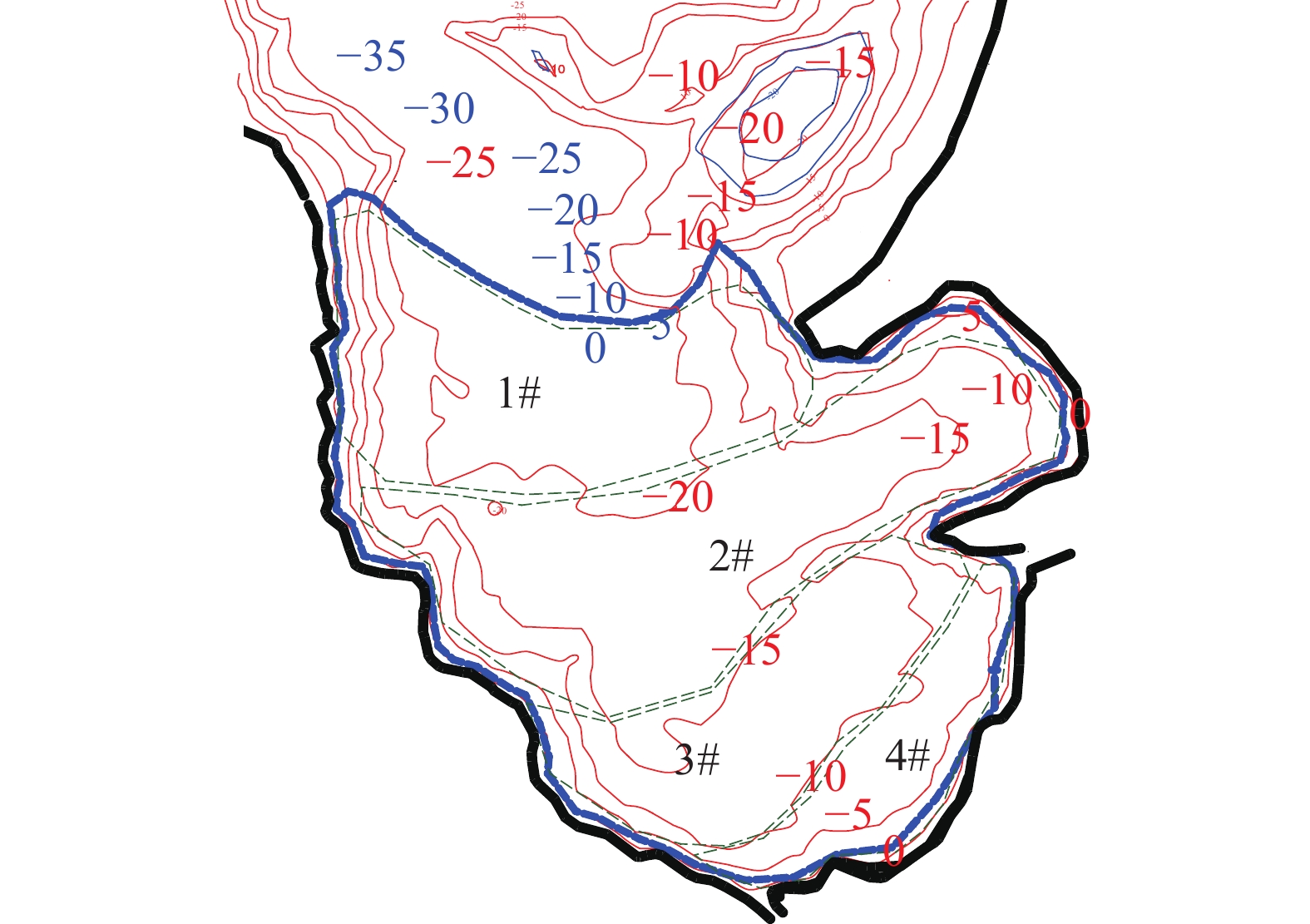Analysis on the cause and mechanism of the pit-collapse of lateral-silde type in the lower Yangtze River
-
摘要: 为全面认识长江下游各类窝崩的形成原因和力学机制,以和畅洲头窝崩为例进行全面分析,进而借鉴土力学方面成果,提出相应的失稳模式和估算方法。结果表明:和畅洲头窝崩属于侧滑型窝崩,其成因主要是岸滩土体中存在易液化的粉砂层,当外界出现一定的振动扰动因素,粉砂层液化条件成熟时则成为滑动层,液化层和上覆土层分多次发生大幅度侧向滑移,土体滑出窝塘口门进入河道深槽,随后被河道主流迅速分散搬运至下游。采用数理统计方法,得到土体滑移距离与液化层厚度和滑移层倾角之间幂函数形式的经验公式。研究结果可为长江下游此类窝崩的预警和治理提供参考。Abstract: For comprehensive understanding about the formation causes and mechanical mechanisms of various types of pit-collapses in the lower reaches of the Yangtze River, taking the pit-collapse in the Hechangzhou head as an example, deep analysis was done, and then the soil mass instability model and displacement estimation method were proposed based on the results of soil mechanics. The results show that the pit-collapse in the Hechangzhou head belongs to lateral-slide type. Its formation cause is a there is a silt layer easy to liquefy in the beach soil. When there is a certain external vibration disturbance factor, once the liquefaction condition is mature, the silt layer becomes a sliding layer, the liquefaction layer and the overlying soil layer would turn into large lateral slides. The slide soil mass would skid out of the collapse pond mouth into the deep channel groove, and then is quickly dispersed and transported to the downstream by the main river current. The empirical formula of power function between the distance of sliding soil mass and the thickness of liquefied layer and dip angle of sliding layer can be obtained by using mathematical statistics method. These results can provide a reference for the early warning and managing of such collapse in the lower reaches of the Yangtze River.
-
Keywords:
- the lower Yangtze Rive /
- pit collapses /
- cause /
- mechanism /
- soil mass lateral slide
-
-
表 1 和畅洲头新窝崩土体分次滑移数据
Table 1 Data of differential soil slip in the new Hechangzhou collapse
滑移数/次 滑移距离/m 液化层厚度/m 滑移倾角/° 滑移量/m3 1 280 3.0 0.69 94 2 380 2.0 1.09 125 3 450 1.5 1.86 82 4 550 1.0 2.58 43 -
[1] 陈引川, 彭海鹰. 长江下游大窝崩的发生及防护[C]∥长江中下游护岸工程论文集(第三集). 武汉: 长江水利水电科学研究院, 1985: 112-116. CHEN Yinchuan, PEN Haiying. Occurrence of the big pit-collapse and bank protection in the lower- Yangtze River[C]∥Proceedings of Bank Protection in the Middle-Lower Reach of the Yangtze River(Ⅲ). Wuhan: Changjiang Water Conservancy and Hydropower Scientific Research Institute, 1985: 112-116. (in Chinese)
[2] 马海顺. 长江六合圩大窝崩的原因分析与治理意见[J]. 安徽水利科技,1990(2):37-47 MA Haishun. Cause analysis and treatment suggestions of the big nest collapse of Liuhe polder on the Yangtze River[J]. Anhui Water Conservancy Science and Technology, 1990(2): 37-47. (in Chinese)
[3] 冷魁. 长江下游窝崩形成条件及防护措施初步研究[J]. 水科学进展,1993,4(4):281-287 doi: 10.3321/j.issn:1001-6791.1993.04.006 LENG Kui. Forming conditions and protective measures of Ω-collapse in the lower Yangtze River[J]. Advances in Water Science, 1993, 4(4): 281-287. (in Chinese) doi: 10.3321/j.issn:1001-6791.1993.04.006
[4] 吴玉华, 苏爱军, 崔政权, 等. 江西省彭泽县马湖堤崩岸原因分析[J]. 人民长江,1997,28(4):27-30 doi: 10.16232/j.cnki.1001-4179.1997.04.011 WU Yuhua, SU Aijun, CUI Zhengquan, et al. Cause analysis of the Mahudi bank collapse in the Pengze reach of Jiangxi Province[J]. Yangtze River, 1997, 28(4): 27-30. (in Chinese) doi: 10.16232/j.cnki.1001-4179.1997.04.011
[5] 金腊华, 王南海, 傅琼华. 长江马湖堤崩岸形态及影响因素的初步分析[J]. 泥沙研究,1998(2):67-71 doi: 10.16239/j.cnki.0468-155x.1998.02.009 JIN Lahua, WANG Nanhai, FU Qionghua. Analysis of topography of bank slides and its affecting factors in Mahu reach of the Yangtze River[J]. Journal of Sediment Research, 1998(2): 67-71. (in Chinese) doi: 10.16239/j.cnki.0468-155x.1998.02.009
[6] 王延贵, 匡尚富. 河岸窝崩机理的探讨[J]. 泥沙研究,2006(3):27-34 doi: 10.3321/j.issn:0468-155X.2006.03.005 WANG Yangui, KUANG Shangfu. Study on Ω caving mechanism in alluvial rivers[J]. Journal of Sediment Research, 2006(3): 27-34. (in Chinese) doi: 10.3321/j.issn:0468-155X.2006.03.005
[7] 余文畴. 长江中下游河道“口袋型”崩窝形成机理初步研究[J]. 人民长江,2007,38(6):40-42 doi: 10.16232/j.cnki.1001-4179.2007.06.017 YU Wenchou. Preliminary study on forming mechanism of pocket shape caving in the middle-lower reach of the Yangtze Rive[J]. Yangtze River, 2007, 38(6): 40-42. (in Chinese) doi: 10.16232/j.cnki.1001-4179.2007.06.017
[8] 余文畴, 苏长城. 长江中下游“口袋型”崩窝形成过程及水流结构[J]. 人民长江,2007,38(8):156-159 doi: 10.3969/j.issn.1001-4179.2007.08.058 YU Wenchou, SU Changcheng. Forming process and flow structure of pocket shape caving in the middle-lower reach of the Yangtze Rive[J]. Yangtze River, 2007, 38(8): 156-159. (in Chinese) doi: 10.3969/j.issn.1001-4179.2007.08.058
[9] 张幸农, 陈长英, 假冬冬, 等. 流滑型窝崩特征及概化模拟试验[J]. 水利水运工程学报,2011(4):13-17 doi: 10.3969/j.issn.1009-640X.2011.04.002 ZHANG Xingnong, CHEN Changying, JIA Dongdong, et al. Lab test study on mechanism of bank flow-induced slide with nest shapein the middle and lower reaches of the Yangtze River[J]. Hydro-Science and Engineering, 2011(4): 13-17. (in Chinese) doi: 10.3969/j.issn.1009-640X.2011.04.002
[10] 假冬冬, 张幸农, 应强, 等. 流滑型崩岸河岸侧蚀模式初探[J]. 水科学进展,2011,22(6):813-817 doi: 10.14042/j.cnki.32.1309.2011.06.009 JIA Dongdong, ZHANG Xingnong, YING Qiang, et al. Preliminary study on the analytical model for slide collapse of riverbanks[J]. Advances in Water Science, 2011, 22(6): 813-817. (in Chinese) doi: 10.14042/j.cnki.32.1309.2011.06.009
[11] 张幸农, 牛晨曦, 假冬冬, 等. 流滑型窝崩水流结构特征及其变化规律[J]. 水科学进展,2020,31(1):112-119 doi: 10.14042/j.cnki.32.1309.2020.01.012 ZHANG Xingnong, NIU Chenxi, JIA Dongdong, et al. Flow structure characteristics and changes in a simulated riverbank nest-shaped flow slide[J]. Advances in Water Science, 2020, 31(1): 112-119. (in Chinese) doi: 10.14042/j.cnki.32.1309.2020.01.012
[12] 应强, 张幸农, 罗龙洪, 等. 基于父子型窝塘地形变化探讨窝崩机理[J]. 水利水运工程学报,2020(3):37-42 YING Qiang, ZHANG Xingnong, LUO Longhong, et al. Discussion on the mechanism of pit collapse based on topographic change of the father-son’s caving pond[J]. Hydro-Science and Engineering, 2020(3): 37-42. (in Chinese)
[13] 赵新铭, 佘跃心. 液化引起的地面侧向扩展研究现状及评述[J]. 华北水利水电学院学报,2000,21(4):53-55 ZHAO Xinmin, SHE Yuexin. Review of the lateral spread induced by liquefaction[J]. Journal of North China Institute of Water Conservancy and Hydroelectric Power, 2000, 21(4): 53-55. (in Chinese)
[14] 蔡晓光, 袁晓铭, 刘汉龙, 等. 近岸水平场地液化侧向大变形机理及软化模量分析方法[J]. 地震工程与工程振动,2005,25(3):125-131 doi: 10.3969/j.issn.1000-1301.2005.03.022 CAI Xiaoguang, YUAN Xiaoming, LIU Hanlong, et al. Mechanism and softening modulus approach for liquefaction-induced lateral spreading of ground near river bank or seashore[J]. Earthquake Engineering and Engineering Vibration, 2005, 25(3): 125-131. (in Chinese) doi: 10.3969/j.issn.1000-1301.2005.03.022
[15] 丁普育, 张敬玉. 江岸土体液化与崩塌关系的探讨[C]∥长江中下游护岸工程论文集(第3集). 武汉: 长江水利水电科学研究院, 1985: 104-109. DING Puyu, ZHANG Jingyu. Discussion on the relationship between liquefaction and collapse of banksoil[C]∥Proceedings of Bank Protection in the Middle-Lower Reach of the Yangtze River(Ⅲ). Wuhan: Changjiang Water Conservancy and Hydropower Scientific Research Institute, 1985: 104-109. (in Chinese)
[16] 张岱峰. 从人民滩窝崩事件看长江窝崩的演变特性[J]. 镇江水利,1996(2):37-43 ZHANG Daifeng. Based on Renmin beach pit collapse event to evolution characteristics of pit collapse in Yangtze River[J]. Zhenjiang Water Conservancy, 1996(2): 37-43. (in Chinese)



 Email Alerts
Email Alerts RSS
RSS

 下载:
下载:







